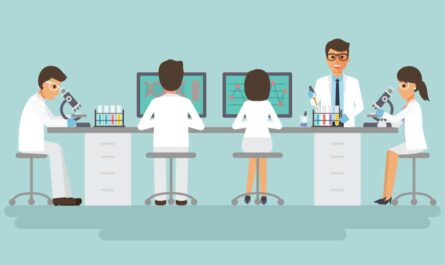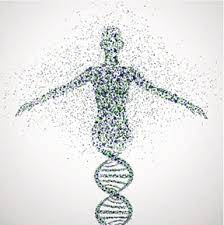
What are Heart Valves?
The human heart contains four valves that control the flow of blood throughout the body. The two atriventricular valves, also called atrioventricular valves, are the tricuspid valve on the right side of the heart and the mitral valve on the left. These valves allow blood to flow forward from the upper chambers (atria) into the lower chambers (ventricles) of the heart. The two semilunar valves are the pulmonary valve and the aortic valve. The pulmonary valve allows oxygen-poor blood to be pumped from the right ventricle to the lungs. The aortic valve allows oxygen-rich blood to be pumped from the left ventricle to the rest of the body.
What Causes Heart Valve Disease?
Several conditions can damage or weaken the heart valves over time, causing them to function improperly. The most common causes of valve disease include:
– Degenerative Valve Disease: Also called valvular heart disease, this occurs when the valves weaken and stiffen due to calcification. It usually affects older adults.
– Congenital Heart Defects: Some people are born with abnormal heart valves or defects in the structure of the valves.
– Rheumatic Fever: A complication of strep throat that causes inflammation and scarring of the heart valves. It often strikes children and young adults.
– Infective Endocarditis: A bacterial infection of the inner surfaces of the heart, including the valves. Risk factors include intravenous drug use and poor dental health.
– Heart Attack: Damage to the heart muscle can affect the functioning of the valves as well.
Symptoms of Valve Disease
The symptoms of valve disease will depend on which valve is affected and how severely it is damaged. Some common signs include:
– Shortness of breath, especially during exertion or while lying down
– Chest pain.
– Fatigue.
– Palpitations or an irregular heartbeat.
– Coughing or wheezing.
– Swelling in the feet, legs, ankles or abdomen.
– Dizziness or fainting.
Diagnosing Valve Problems
If a heart murmur or other signs suggest valve disease, doctors will likely order one or more tests to evaluate the heart valves. These include:
– Chest X-ray – To check the size and shape of the heart.
– Echocardiogram – An ultrasound of the heart used to observe valve structure and blood flow and measure pressures.
– Electrocardiogram (EKG) – Records heart rhythm and electrical activity.
– Cardiac Catheterization – A thin tube is inserted in the heart to directly measure pressures and check for any blockages.
Treatment Options for Damaged Valves
When valves are damaged enough that they are no longer functioning properly, repair or replacement of the valves may be needed. Treatment depends on the severity and cause of valve disease:
– Valve Repair: For some people, especially with problems like mitral regurgitation, the damaged valve can be repaired instead of replaced using techniques like annuloplasty rings or reconstructive surgery. This preserves the original valve.
– Biological Valve Replacement: Defective heart valves may be replaced with valves from pigs or cows or from human cadavers. These valves last 10-20 years on average before they need to be replaced.
– Mechanical Valve Replacement: For people who are too high-risk for biological valves, mechanical valves made of plastic or metal may be implanted instead. While these valves last much longer, they require long-term blood thinning medication to prevent blood clots from forming.
Recovery After Valve Surgery
Heart valve surgery is considered major open-heart surgery. Recovery usually takes 2-6 months depending on which valve was replaced or repaired. In the initial weeks after surgery, patients may feel tired, sore, or breathless. Closely following doctors’ discharge instructions and any activity restrictions is important. Most people can return to daily activities within 4-6 weeks and resume exercise within 3 months. Lifelong cardiac monitoring will also be recommended. Modern surgical techniques allow most people who undergo heart valve procedures to live active, productive lives.
Prosthetic Heart Valves: Artificial Options
When damaged valves cannot be repaired, they are often replaced with artificial prosthetic valves made of plastic, metal or biological materials like pig valves. Here’s a closer look at the different prosthetic heart valve options:
Mechanical Valves: The oldest and most durable type, mechanical valves usually last 20-30 years. They are generally made of carbon or a durable plastic coated in pyrolytic carbon. While they have no risk of rejection or wearing out, chronic blood thinning medication is needed due to the higher risk of blood clots forming around the valve mechanism as it opens and closes.
Biological Valves: These include pig (porcine) valves and valves from cows (bovine pericardial valves). They are constructed from surgical implants that mimic natural heart valves. Pig valves and pericardial valves typically last 10-15 years before needing replacement. The advantage is no need for blood thinners, but there is a small risk of rejection from the body.
Stentless Biological Valves: crafted from a donor pig or cow valve mounted inside a flexible stent. They allow for more complete preservation of the valve structure and function compared to stented valves.
Tissue Valves: Made from biocompatible materials like polyurethane or chemically treated animal tissues. Some are covered by a fabric sewing ring that can be sutured in place during surgery. They aim to combine the hemodynamic effectiveness of a mechanical valve with the biocompatibility of a tissue valve. Early designs only lasted 5-7 years however newer third-generation models may last 15-20 years.
Prosthetic Valves and Lifestyle
While repairing the original valves is preferable if possible, replacement with prosthetics gives people with valve disease valuable extra years and quality of life. Overall, artificial heart valves have come a long way in mimicking and improving upon natural valves. With proper care and follow-up, patients can look forward to returning to active lifestyles after surgery. Ongoing research also aims to develop even more durable and biocompatible options for the future. Replacement heart valves are truly life-saving innovations.
In summary, prosthetic heart valves are an important treatment option for many people suffering from damaged or diseased valves. Whether mechanical or biological, artificials valves restore blood flow and pump function, allowing recipients to resume normal activities. Close follow-up with doctors is still required however, to monitor valve function and address any issues that arise over time. With care, artificial valves can greatly extend healthy years for those in need.



